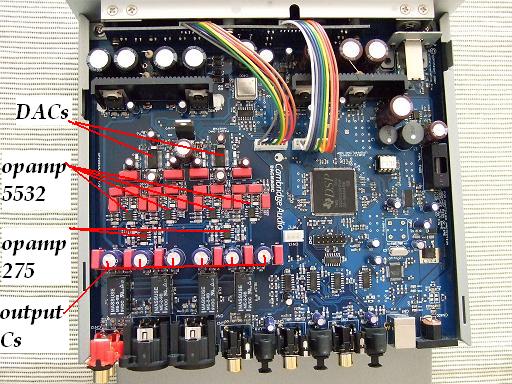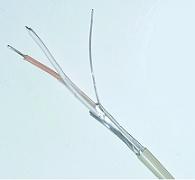Cambridge Audio DacMagic
Wolfson DACs, extra DSP inside, symetric outputs, USB input, switchable filters and the talk of an audio friend had made me curious about this doubtlessly very versatile piece of equipment. When I first heard the DacMagic it was hooked up to my system. I had borrowed it from the dealer for the weekend to check if it would 'outperform' the lampisized Rotel RCD1072. The Burr-Brown PCM1732 DAC chip inside the Rotel is not one of those much aclaimed DACs yet after 'lampisation' I was very happy with the results.
The first sonic impression I got from the DacMagic raised the thought "nicely analog", a little layed back for my liking. With time I started to hear more distinct differences. By the end of that day I was waxing lyrical about it.
It is curious, in audiophile circles we hear a lot about equipment breaking in but talk about listeners breaking in has not come my way yet. Certainly the way I percieve well known music from a freshly modified but else well known system is not the same at the beginning than it is after a couple of hours listening to it.
As I later read on the web I can confirm that the bass has something stunning about it. It keeps me wondering what the developers told the DSP to do with this lower register. Deep and clean! Also it seems to me that instruments have more space around them. The second day listening to it became clear, the DacMagic was here to stay. Yet I had big plans for it. The Wolfson DACs would sooner or later be interfaced to tubes one way or another...
Time passed and now and again I switched back to the lampizator output of the Rotel CDP and found it very refreshing. Music happens more upfront, the stage is closer with the mid frequency range having more presence. But with time there is no denying, it lacks the refinement of the DacMagic.
Still uncertain how to best interface the Wofson DACs to tubes, the idea came to simply try connecting the signal from the balanced outputs to the RCA input of the amplifier. This bypasses the last opamp, keeps the goodies of the double differential circuitry yet loosing the balanced signal trasfer to the amplifier. A pair of cables wired as shown below was quickly setup. No opening the DAC, no soldering inside.
The result: Lots more magic!!! Hearing is believing.
No more switching back to Lampizator.

No more switching back to Lampizator.

To make the interconnects I used ' 120 Ohm PCM cable'. It features 1 pair of solid core full shielded wires.

